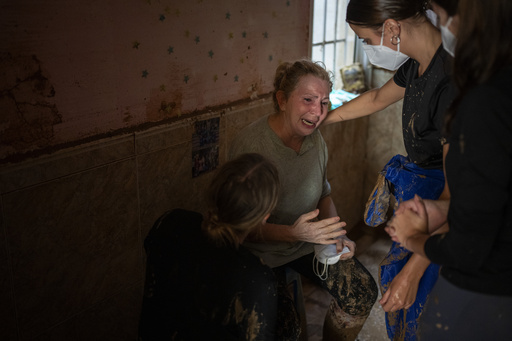
MADRID — Last week, devastating torrential rains in eastern Spain led to massive flooding, resulting in overflowing rivers and canals that typically remain dry. These sudden floods submerged various communities and have tragically claimed numerous lives.
The aftermath of the heavy rainfall has left a path of destruction, particularly in Valencia, which bore the brunt of the disaster. The search efforts for those who are deceased or still missing persist even more than a week following the floods that occurred on October 29. Concurrently, an extensive cleanup and recovery operation is underway.
Here are some key statistics regarding the deadliest natural disaster Spain has faced in this century:
The casualty count has risen to at least 219 confirmed deaths, with 93 people reported missing. The majority of the fatalities, numbering 211, occurred in the Valencia region, while neighboring Castilla La Mancha recorded seven deaths, and southern Andalusia saw one. Authorities have marked 93 individuals as officially missing, yet they acknowledge that the true figure may be even higher. Moreover, there are still 54 unidentified bodies. In total, around 36,605 individuals have been rescued as per official reports.
The financial repercussions of the disaster are enormous. Although the complete toll of damages is yet to be assessed, Spain’s Consortium for Insurance Compensation, which manages claims for catastrophic events like floods, is projecting expenditures of no less than 3.5 billion euros (approximately $3.8 billion) for compensation. The consortium has already received 116,000 claims related to flood damages, with around 60% being for vehicles and 31% tied to residential properties. Spain’s Association of Insurance Companies indicates that this flood event may surpass previous records for insurance payouts.
In terms of infrastructure, the Transport Ministry has repaired 232 kilometers (about 144 miles) of roads and railways, but critical high-speed rail connections between Valencia and Madrid remain unusable.
Additionally, the central government has announced a relief package amounting to 10.6 billion euros (about $11.6 billion) aimed at assisting families, businesses, and local municipalities. The Valencia regional government is also seeking an additional 31 billion euros (approximately $33 billion) in aid from the national government.
This disaster was exacerbated by a two-year drought coupled with unprecedented heat, which scientists say created an ideal environment for severe flooding. Spain’s meteorological agency reported that a record 30.4 inches of rainfall fell within just one hour in the town of Turis on October 29. In the devastated village of Chiva, rainfall within an eight-hour span exceeded that of the prior 20 months combined.
The floods particularly impacted the Magro and Turia Rivers, as well as the Poyo canal, transforming them into fast-moving torrents that wiped out everything in their paths. The scale of the flooding resembled a tsunami, causing widespread destruction in the southern outskirts of Valencia. Images captured by the European Space Agency on October 31 indicated that water inundated an area of roughly 15,633 hectares (38,600 acres), with around 190,000 individuals directly affected by the floods. Tragically, at least one resident perished in 78 different municipalities.
In terms of emergency response, more than 17,000 military personnel and police officers have been deployed in this massive operation, which also includes around 8,000 soldiers, 2,100 of whom are members of specialized military emergency units. Additionally, 9,200 police officers from various regions of Spain are involved in the relief efforts. The dedication of local volunteers has also been crucial, although an exact estimate of their numbers remains unavailable.
Within the first week post-disaster, authorities managed to restore electricity to 147,000 households and distributed roughly 178,000 bottles of water to locations still lacking clean drinking water.
However, several critical uncertainties remain. Spanish officials have yet to disclose the volume of calls reporting missing individuals, provide an estimate of the total property damage incurred, or quantify the amount of land affected by the floods. Moreover, no timeline has been established for when the comprehensive recovery operation will be completed.
